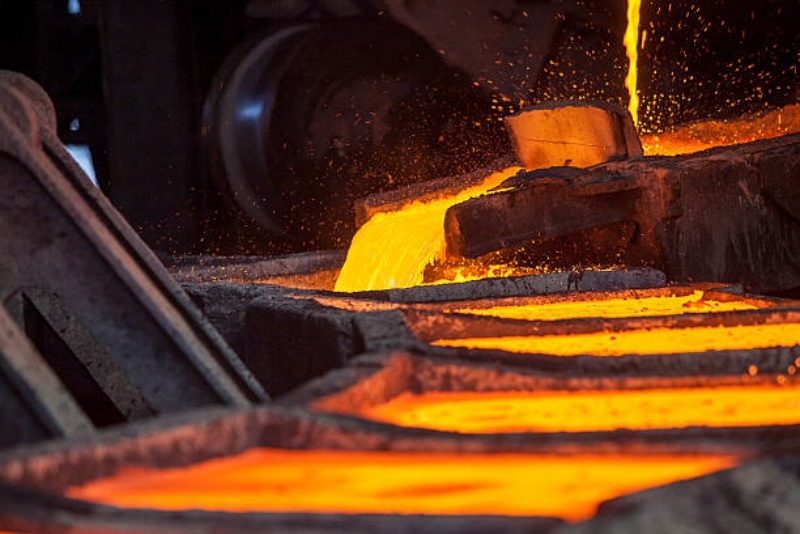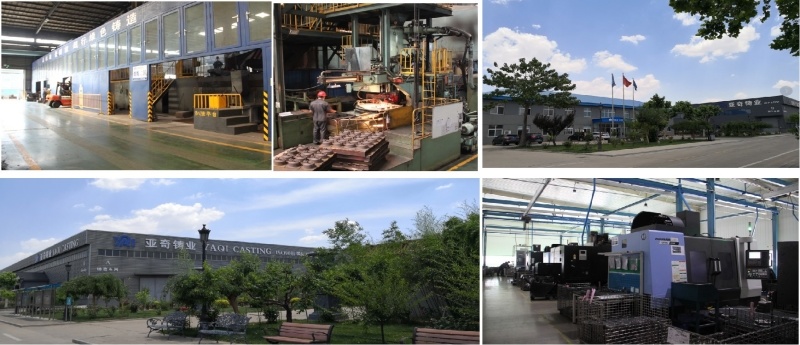How are Castings Made? What Machines are Used for Metal Casting?
Release time:
2024-03-09
How are Castings Made?
Metal casting is a fascinating process that has been utilized for centuries to create a wide range of objects and components. At its core, metal casting involves pouring molten metal into a mold cavity, allowing it to cool and solidify, ultimately forming the desired shape. Let's explore the intricate steps involved in the casting process and the various methods employed to achieve precision and quality in manufacturing.
The process begins with the creation of a mold, which serves as the negative space into which the molten metal will be poured. Molds can vary in complexity, from simple forms for ingots to intricate patterns for detailed components. Depending on the casting method, molds may be made of sand, metal, or other materials.
Once the mold is prepared, the next step is to melt the chosen metal to its liquid state. This is typically done in a furnace, where temperatures reach high levels to ensure complete melting and proper flow characteristics.
With the metal molten and the mold ready, the casting process can commence. The molten metal is carefully poured into the mold cavity, taking care to avoid any defects or imperfections. The metal then fills the mold, conforming to its shape and intricacies.
After pouring, the metal is allowed to cool and solidify within the mold. This cooling process can take varying amounts of time depending on factors such as metal type, mold material, and part size.
Once the metal has solidified, the mold is opened, revealing the newly formed casting. Depending on the casting method used, the casting may require further processing, such as sand removal, heat treatment, or machining, to achieve the desired final shape and properties.
Overall, the casting process is a complex and intricate endeavor that requires careful attention to detail and precision at every step. By employing advanced techniques and machinery, manufacturers can produce high-quality castings that meet the demanding requirements of modern industries.

What Machines are Used for Metal Casting?
Metal casting relies on a variety of specialized machines and equipment to ensure precision, efficiency, and quality throughout the manufacturing process. Let's take a closer look at some of the key machines commonly used in metal casting operations:
Furnaces: Furnaces are used to melt metal to its liquid state, creating the molten metal necessary for casting. These furnaces come in various types, including electric arc furnaces, induction furnaces, and crucible furnaces, each suited to different metals and production volumes.
Molding Machines: Molding machines are used to create molds for casting operations. These machines can range from simple manual tools for sand casting to automated systems for more complex casting methods such as die casting and investment casting.
Core Making Machines: Core making machines are used to produce cores, which are internal structures used to create voids or internal features in castings. These machines can vary from simple core shooters for sand casting to sophisticated 3D printing systems for complex geometries.
Pouring Equipment: Pouring equipment includes ladles, pouring cups, and automated pouring systems used to transfer molten metal from the furnace to the mold cavity. These systems are designed to ensure precise control over metal flow and minimize defects in the casting.
Shakeout Equipment: Shakeout equipment is used to remove castings from molds after they have solidified. This can include vibratory shakeout tables, pneumatic hammers, and other devices designed to safely and efficiently separate castings from molds.
Finishing Equipment: Finishing equipment is used to clean, smooth, and prepare castings for use or further processing. This can include shot blasting machines, grinding wheels, and other tools used to remove excess material and improve surface finish.
By employing advanced machinery and equipment tailored to specific casting methods, manufacturers can achieve greater efficiency, consistency, and quality in their metal casting operations.

Advanced Machines and Techniques at Botou Yaqi Casting
At Botou Yaqi Casting, we pride ourselves on our commitment to innovation and excellence in metal casting. Utilizing state-of-the-art machinery and advanced techniques, we deliver high-quality castings that meet the stringent requirements of our global clientele.
Our casting facilities are equipped with cutting-edge equipment, including Japanese horizontal automatic molding lines and CNC machining centers, enabling us to produce complex castings with precision and efficiency. These machines are capable of handling a wide range of materials and part geometries, ensuring versatility and flexibility in our manufacturing processes.
In addition to our advanced casting machines, we employ rigorous quality control measures and adhere to international standards to ensure consistent quality and reliability in every casting we produce. Our dedication to excellence has earned us recognition as a leader in green casting practices and a top-tier player in the Chinese casting industry.
With a focus on customer satisfaction and continuous improvement, Botou Yaqi Casting remains at the forefront of metal casting innovation, pushing the boundaries of what is possible in manufacturing and delivering superior castings to industries worldwide.
Key words:
Recommended News







